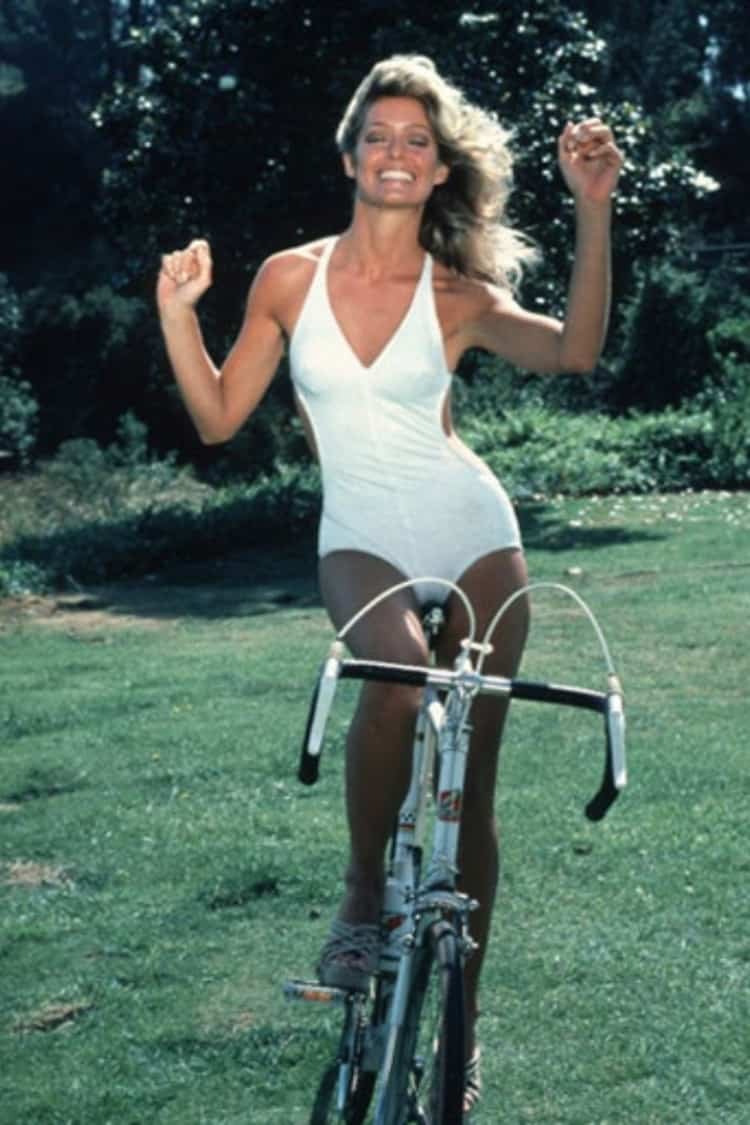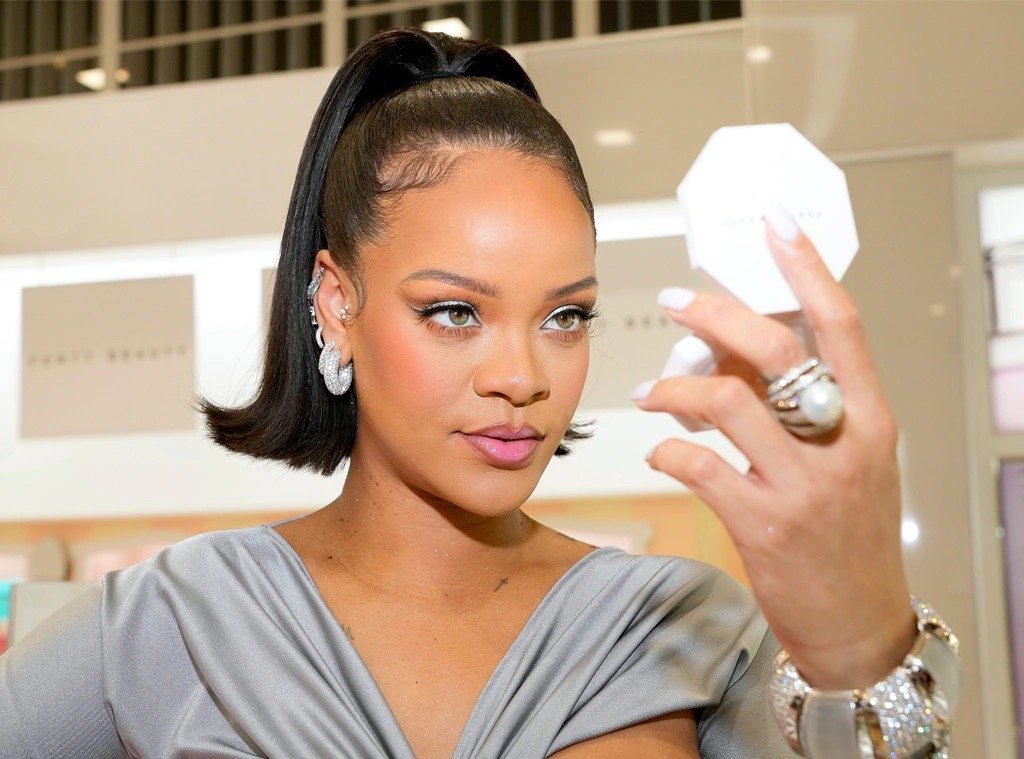A Journey Through Decades: How Beauty Standards Have Evolved Over the Last Century
Beauty standards have continually evolved, reflecting societal changes, cultural shifts, and technological advancements. Let's take a fun and nostalgic journey through the decades to see how beauty ideals have changed from the 1920s to the present.
Makeup artist and inventor, Max Factor doing muse makeup. Photo from Maxfactor.com.
The Flapper Era
The 1920s was a dramatic change, characterized by the flapper look. Women embraced shorter bobbed hair, thin eyebrows, and a rebellious spirit that defied traditional norms. The ideal look was all about breaking free from the past, with a focus on bold, unconventional beauty. Dark, kohl-rimmed eyes, thin brows, and bold, dark lips were all the rage. This look was both daring and glamorous, representing women's newfound independence. Iconic brands like Max Factor and Maybelline emerged, making makeup more accessible to everyday women. Influencers such as Clara Bow and Louise Brooks set trends with dramatic makeup and bobbed hairstyles.
Clara Bow Courtesy Everett Collections
The Golden Age of Hollywood
The 1930s saw the rise of Hollywood glamour, with women aspiring to the polished and sophisticated looks of movie starlets. The ideal beauty standard was glamorous and polished, heavily influenced by the silver screen. Makeup trends included arched, thin eyebrows, fuller lips, and a more natural yet glamorous look. Revlon was founded during this era, bringing nail polish and matching lipstick to the masses. Influencers like Greta Garbo and Marlene Dietrich became the epitome of beauty with their sophisticated and sultry styles.
The War Era
The 1940s, marked by World War II, saw women's resilience and adaptability in the face of significant societal changes. Despite the war, women were encouraged to maintain their looks, leading to a practical yet glamorous ideal. The focus was on a natural yet polished appearance. The main trends were red lips, natural eyes, and softly curled hair. Elizabeth Arden supported the war effort with patriotic makeup products, emphasizing the importance of beauty even during tough times. Veronica Lake and Rita Hayworth became beauty icons known for their iconic hairdos and classic beauty.
Veronica Lake via Getty
The Post-War Boom
Estée Lauder with a customer 1966 via Google
The 1950s was a time of prosperity and optimism, reflected in the ultra-feminine beauty standards. The ideal look was all about hourglass figures, glamorous beauty, and a polished appearance. Women embraced their femininity with confidence. Winged eyeliner, red lips, and perfectly coiffed hair were the hallmarks of the decade. Estée Lauder became a household name, offering luxurious beauty products. Influencers like Marilyn Monroe and Audrey Hepburn set the bar with their timeless and elegant beauty, becoming era icons.
The Mod Movement
Courtesy of Getty Images
The 1960s brought a youthful, playful, and experimental approach to beauty. The mod movement, characterized by bold and innovative styles, influenced the ideal look. This decade was all about breaking boundaries and embracing individuality. Bold eye makeup, with heavy eyeliner, mascara, and pastel lips, defined the era. Mary Quant, famous for popularizing the miniskirt, also launched a makeup line that captured the spirit of the times. Influencers like Twiggy and Brigitte Bardot became symbols of the era, known for their dramatic eye makeup and youthful looks.
Photo: Popperfoto/Getty Image
The Natural and Disco Eras
Bowie getting his Ziggy Stardust makeup applied
The 1970s saw a shift towards natural and free-spirited beauty, emphasizing individuality. A decade later, women transitioned to the glamorous disco era, reflecting the vibrant nightlife and music scene. Earth tones, bronzed skin, and glittery and bold disco makeup were popular. With his flamboyant alter egos and boundary-pushing styles, Iconic figures like David Bowie also heavily influenced the era's beauty trends. Influencers like Farrah Fawcett and Diana Ross represented natural beauty and disco-glam, setting trends that defined the decade.
Diana Ross via Chris Walter/Wireimage
Farrah Fawcett via Vanity Fair
The Bold and the Beautiful
Madonna by George Holz
The 1980s embraced the mantra "bigger is better," with bold makeup, big hair, and bright colors dominating the beauty scene. The ideal look was all about making a statement and standing out. Bright eyeshadows, bold blush, and dramatic contouring were crucial trends. MAC Cosmetics, known for its bold colors, was founded in 1984 and quickly became a favorite. Influencers like Madonna and Cindy Crawford epitomized the bold and glamorous 80s look, inspiring women to experiment with beauty routines.
The Grunge and Minimalist Era
Naomi Campbell & Kristen Mc Menamy Vogue US Dec. 1992 “Grunge and Glory” Photo Steven Meisel
The 1990s introduced a range of beauty trends, from grunge to minimalist chic. The ideal look varied, reflecting the decade's diversity and experimentation. Dark, smoky eyes, matte skin, and natural lip colors were famous. Urban Decay, known for its edgy, unconventional products, became a go-to brand. Influencers like Kate Moss and Naomi Campbell showcased grunge and high fashion, making them era icons.
The Y2K and Glamour Era
SCREENSHOT/YOUTUBE. “WE NEED A RESOLUTION” MUSIC VIDEO, AALIYAH.
The early 2000s embraced the shiny, glossy, and glamorous aesthetic of the Y2K era. Pop culture and the rise of digital media influenced beauty standards, emphasizing looking polished and put-together. Glossy lips, shimmery eyeshadows, and bronzed skin were the main trends. Brands like Stila and Benefit Cosmetics gained popularity, offering innovative products that catered to the glamorous look. Influencers like Britney Spears, Jennifer Lopez, and Aaliyah represented the quintessential Y2K glamour, setting trends that defined the decade. Aaliyah's effortless style, signature sleek hair, and understated makeup added a relaxed, laid-back element to the era's overall aesthetic.
The Era of Diversity and Inclusion
Kevin Mazur/Getty Images for Fenty Beauty by Rihanna
From the 2010s to the present day, we have seen a shift towards embracing diversity and individuality. There is no longer a single standard of beauty; instead, the focus is on celebrating a wide range of looks and styles. Bold brows, highlighter for glowing skin, and a wide range of foundation shades are vital trends. Fenty Beauty by Rihanna revolutionized the industry with its inclusive shade range, setting a new standard for diversity. Influencers like Kylie Jenner and Huda Kattan drive trends through social media and their beauty brands, promoting a more inclusive and diverse beauty landscape.
From the rebellious flappers of the 1920s to today's inclusive and diverse beauty landscape, beauty standards have been shaped by many cultural, social, and technological factors. Media and pop culture, economic and political shifts, and technological advances have all played pivotal roles in influencing beauty trends. Beauty also serves as a form of self-expression, evolving with personal and cultural identity, while celebrities and social media influencers continually set new standards. Each decade, they brought their unique flair, reflecting the dynamic nature of societal norms and personal expression. So, next time you swipe on your favorite lipstick or perfect your winged eyeliner, remember the rich history behind those beauty choices!

















